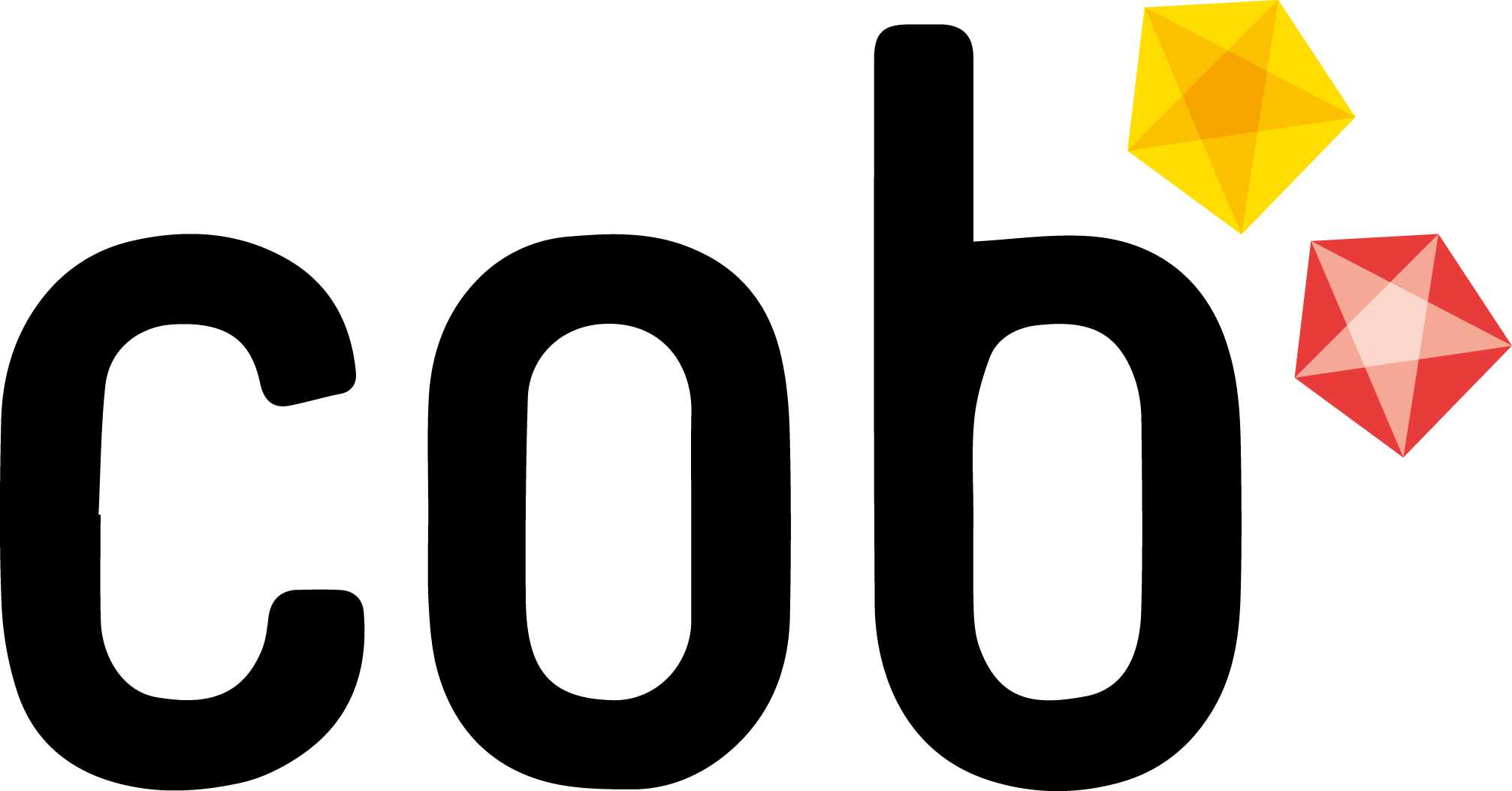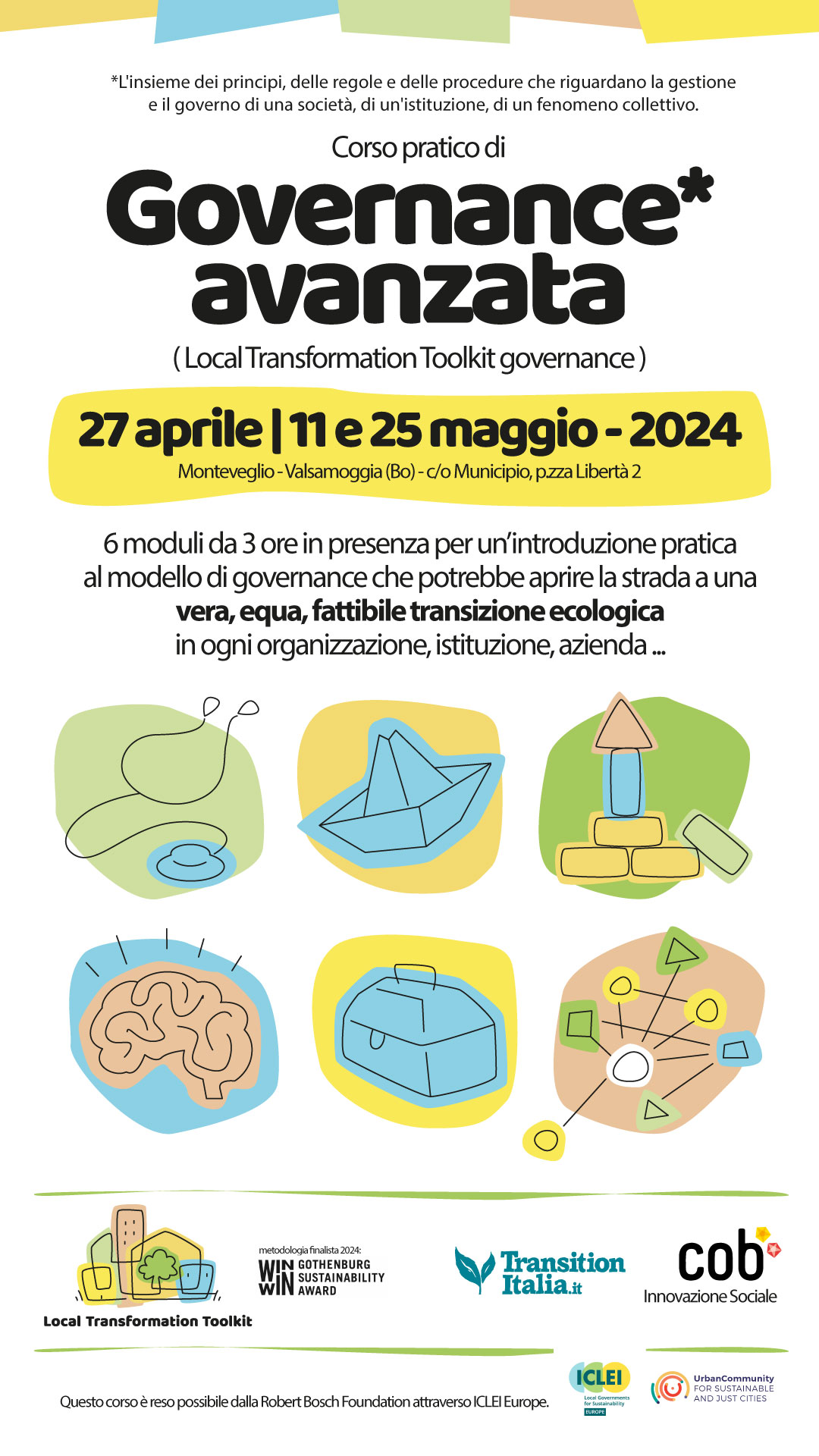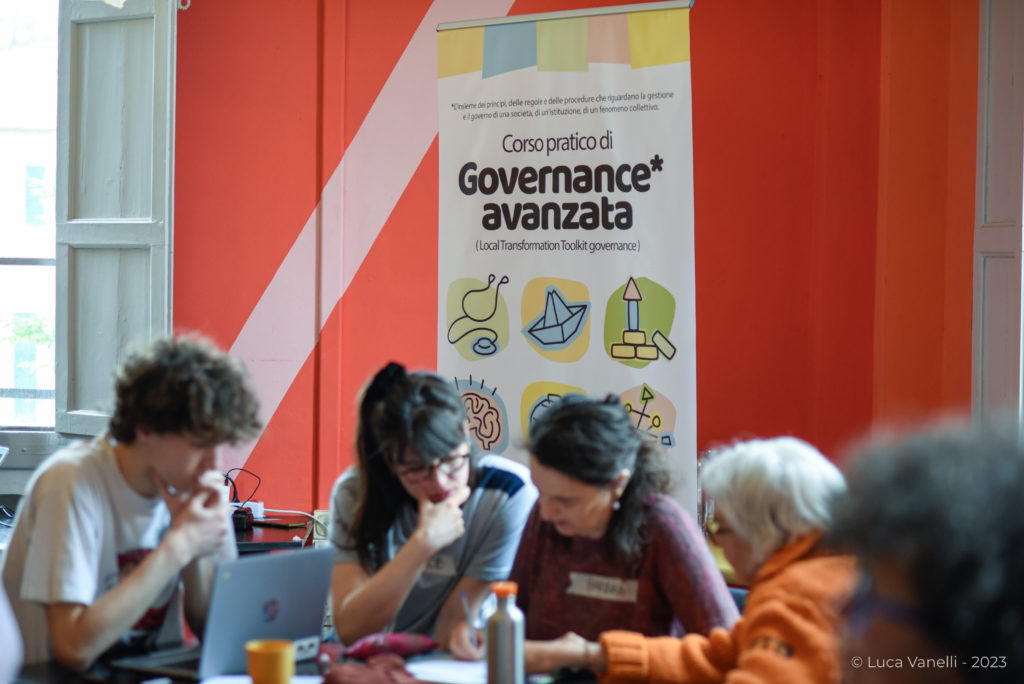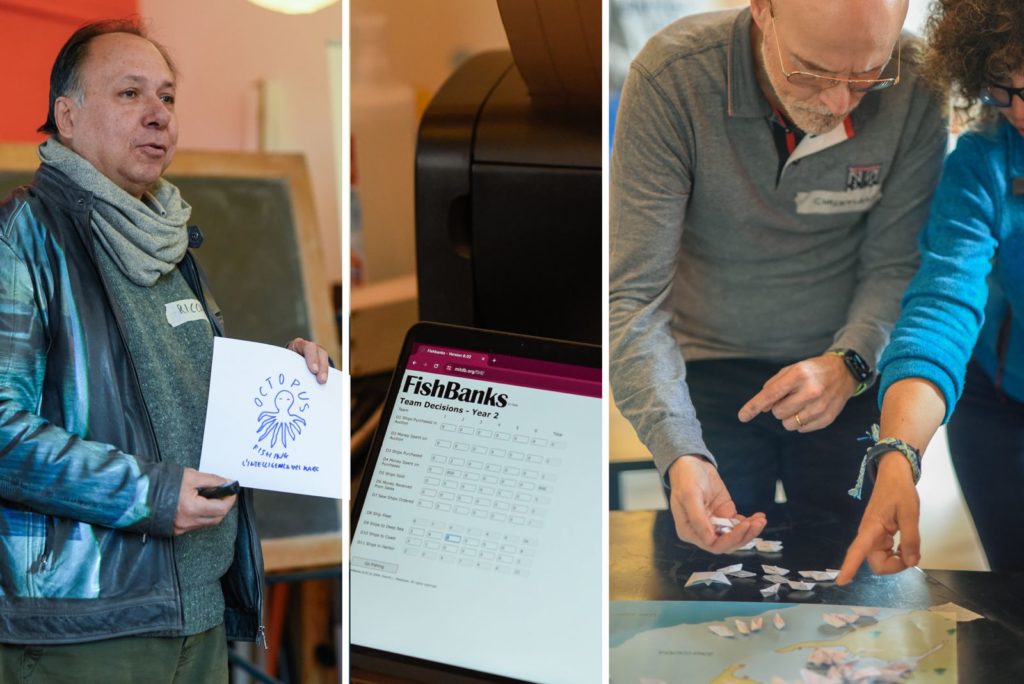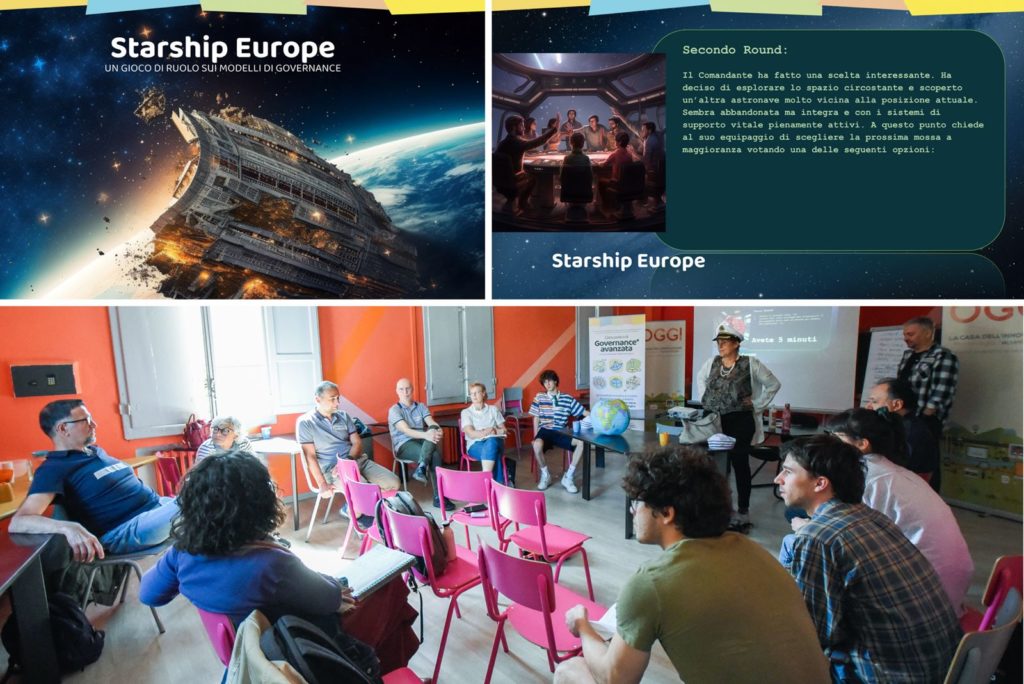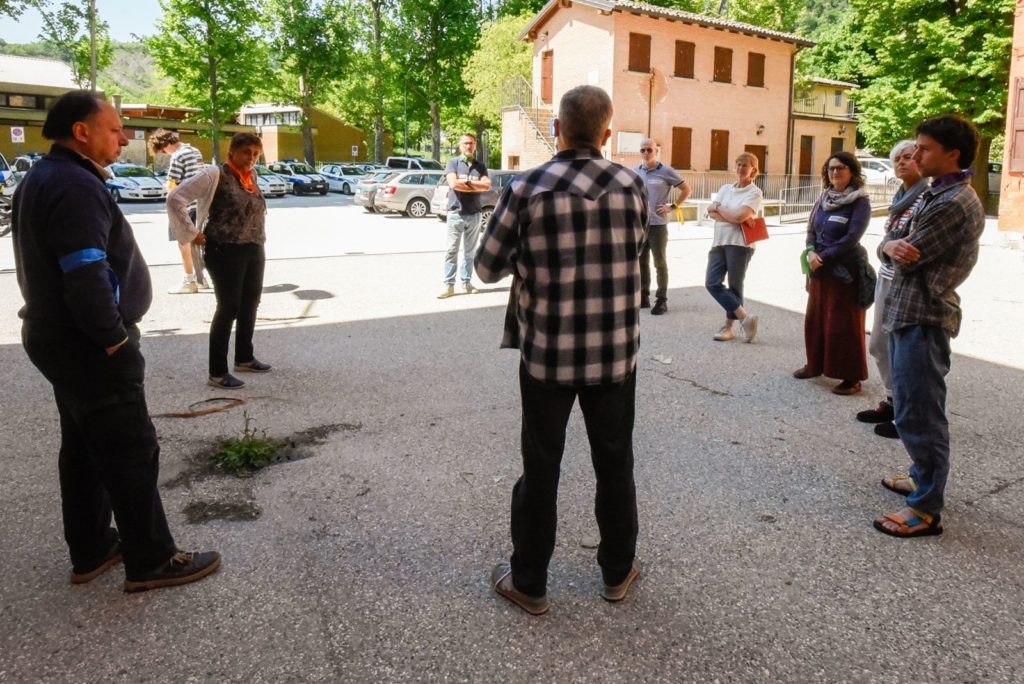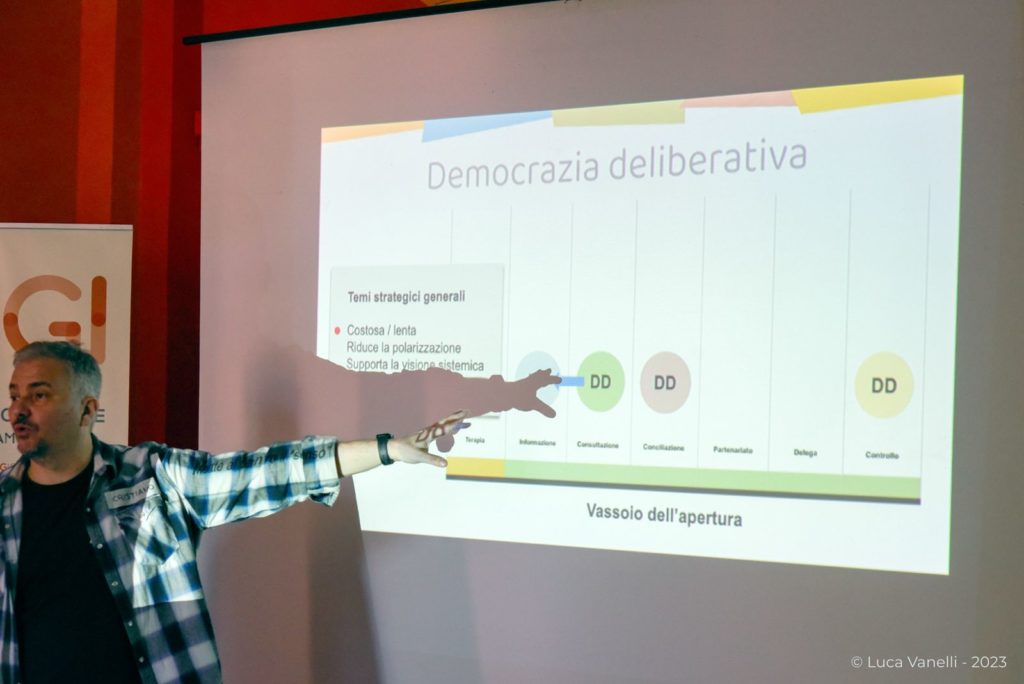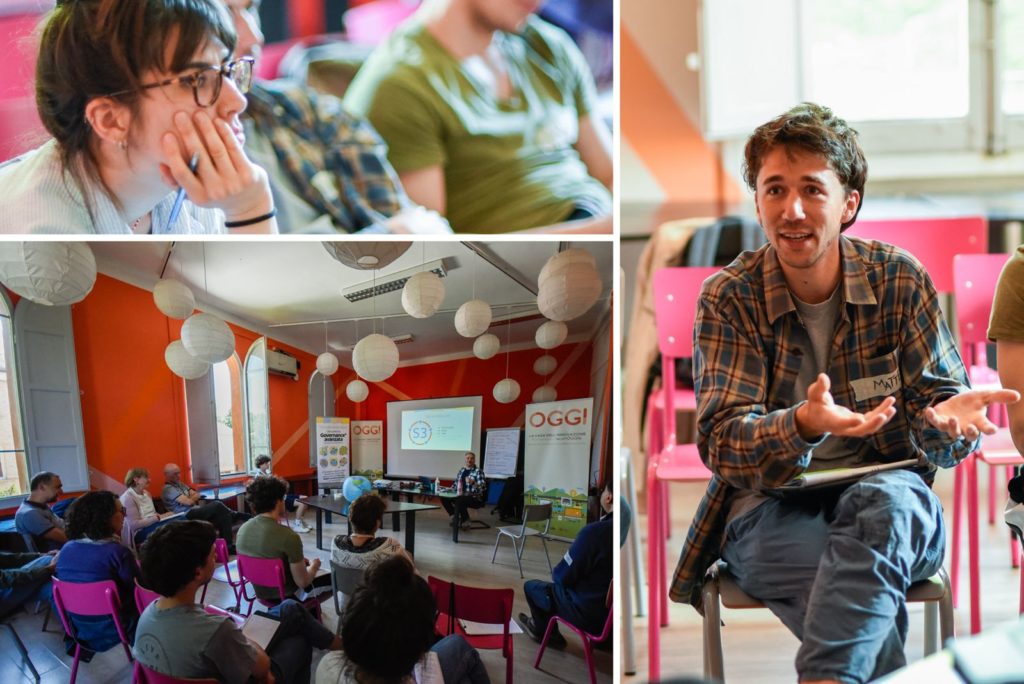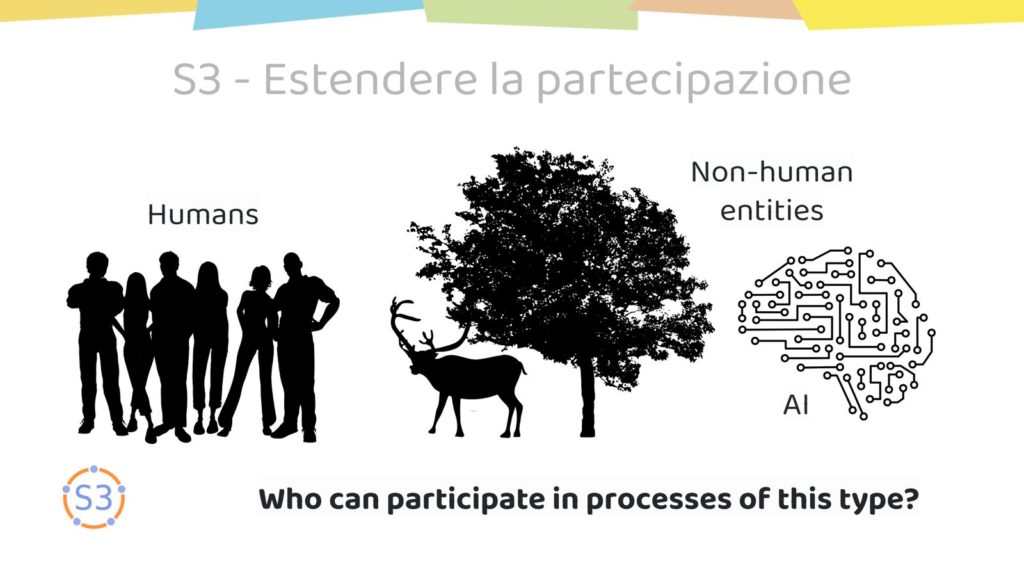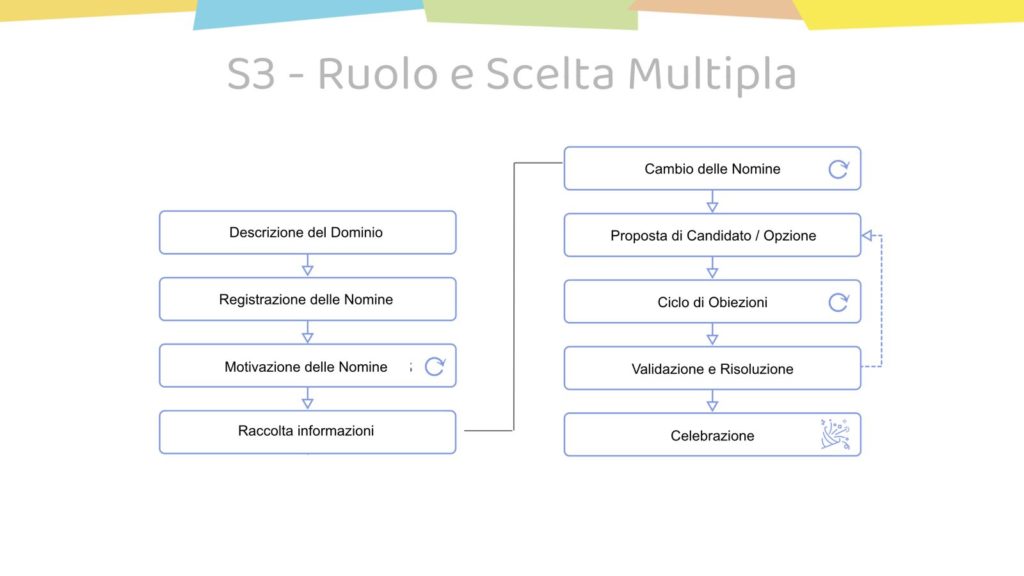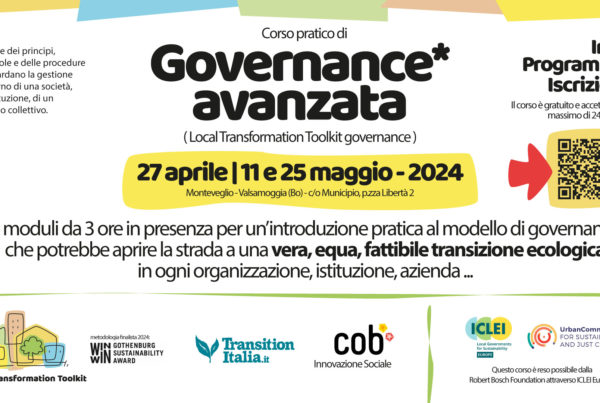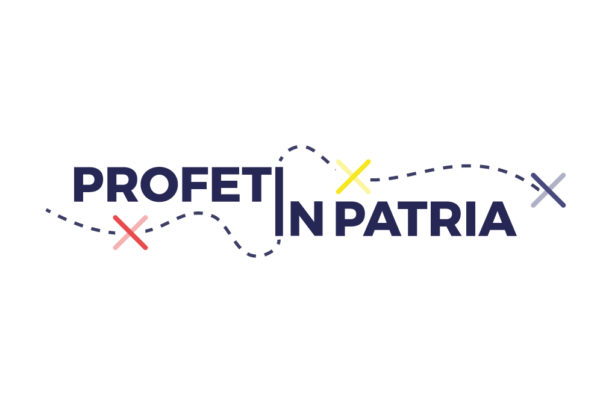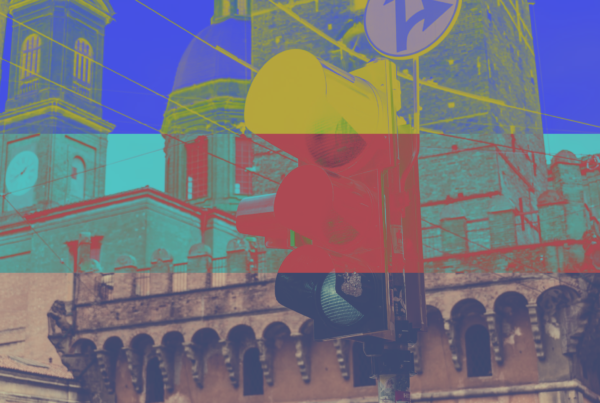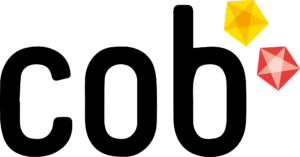Advanced governance practical course
(Local Transformation Toolkit governance)
Surprisingly attractive
This introductory training in advanced governance methodologies that could help our communities meet the challenges of a just transition began without great claims of impact.
The methodology is derived from the Local Transformation Toolkit (LTT) approach which is a rather broad and complex framework, while the training would necessarily have been short and introductory. And anyway, in general, we know that expectations must be kept low when dealing with such delicate topics.
In spite of all this, the surprises began right from the publicity phases of the event: within a couple of days the available places were sold out.
A further surprise was the observation that those enrolled did not only come from the local area of Valsamoggia (an Italian municipality located near the metropolitan city of Bologna) and surrounding areas, but also from other areas of northern Italy, even hundreds of kilometers away.
Lastly, the profile of the participants was also not exactly what we expected. We imagined that the proposal would mainly attract activists from the environmental and social justice areas but instead we mainly had professional consultants (in the same fields) and politicians (elected or candidates in the next elections).
Trained to make disasters
Day 1 – Module 1 – On the morning of the first day we immersed the group in a role-playing game that in just a few hours allows them to experience first-hand many of the mechanisms that make the current development model unsustainable.
The game is called Fishbanks and is one of many tools created by Dennis Meadows to help people understand the perverse relationship that develops between our development systems and the resources on which they rely. Fishbanks is a role-playing board game where teams of players manage and operate their own fishing companies, but we don’t want to say more so as not to ruin the “pleasure” of the experience for anyone who wants to try it.
Navigating complexity
Day 1 – Module 2 – Playing Fishbanks allowed the group to gain immediate awareness of how risky it can be to face the complexity of the world with the summary rules that now govern human processes, the market, resource management, etc.
So how could we begin to manage reality differently? Fortunately, you can start with relatively simple tools that can help individuals, organizations and institutions tackle complexity more effectively. To this end, the group began to familiarize themselves with the Senge and the Cynefin framework. Both make our navigation in the complexity of the world more effective and make it easier to prepare decision-making processes aware of system dynamics. We immediately experimented with them with simple practical examples, knowing that we would then refer to them in subsequent modules of the course.
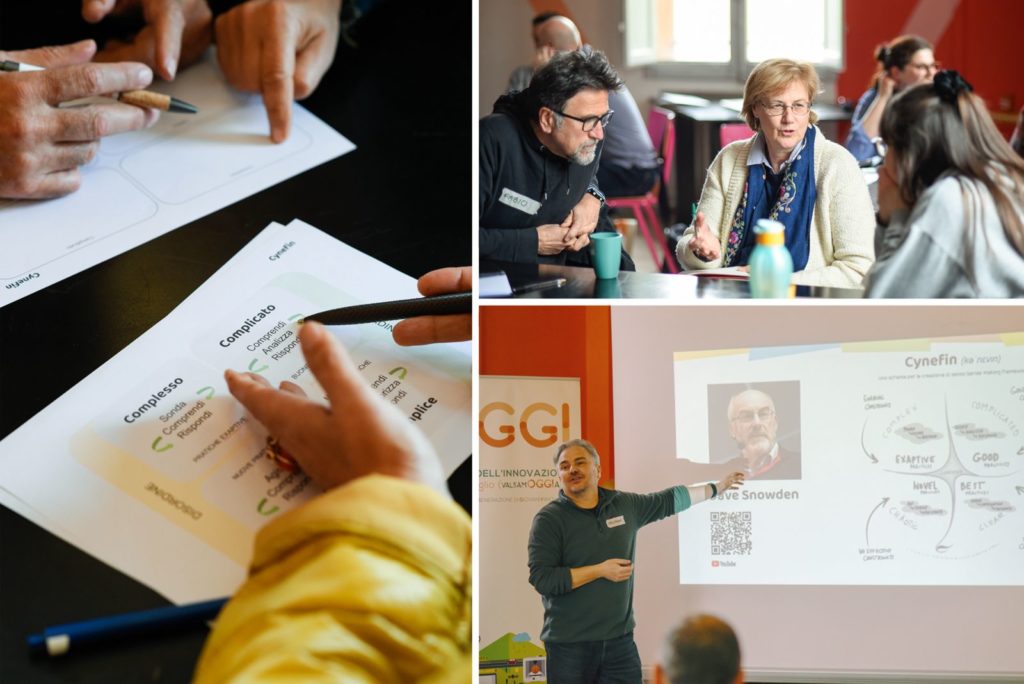
Making decisions: the ways we know
Day 2 – Module 3 – To start the second day of our short course in style, the group was transformed into the crew of a damaged spaceship with the problem of how to make the decisions necessary to save themselves. They experienced the different sensations produced by blindly obeying the commander, by voting by majority to decide what to do, by reaching consensus and unanimity regarding the decision to be made.
Also in this case we won’t tell too much about this simulation in case someone wants to experiment with it, but it is quite useful for bringing out, also from an emotional point of view, certain typical characteristics of complex systems.
For an even deeper understanding, we then played with our bodies to build a complex system based on very simple rules and challenged some participants, who were kept in the dark about the rules themselves, to discover them simply by observing the behavior of the system. If you would like to try an online version of this experience you can find it at this address, follow the rules scrupulously and have fun.
These two experiences serve to introduce one of the most useful tools when it comes to navigating complexity: collective intelligence. We started talking about how to activate it, what its rules are, about the concept of participation and how to evolve it compared to the approaches born in the 60s/70s of the last century. Regarding this evolutionary aspect, we tried to transform the classic Arnstein’s Ladder of Citizen Participation by reorganizing its components horizontally (our definition of this is: Participation Tray), following the suggestion of a comparison between participation and openness.
We also show how some enlightened institutions are now actively working to introduce systemic thinking in their daily life, extracting from these experiences some key points that we considered useful to highlight and bring with us in the next stages of the course, like:
- We need to reimagine governance
- Let’s learn to distinguish between complicated and complex
- It is not systemic vs reductionism, it’s not a binary choice
- We need different styles of thinking for different problems
- Get out of silos
- Go for an experimental approach
- Do not copy and paste, every situation is different
- Seek iterative improvement
- We want the difference, we want diversity
- No landing where you planned to land is actually ok
- Keep your experiments hidden until the final result
In conclusion of this module we analyzed deliberative democracy as a tool that is now relatively available and widespread to activate part of the potential of collective intelligence (wisdom of the crowd) and how it fits in the Participation Tray.
Let’s do it different
Day 2 – Module 4 – And after this long approach aimed at strengthening a certain type of awareness among the participants, we enter the heart of LTT governance. This is almost totally based on the use of Sociocracy 3.0 (S3) tools to which some slight variations are applied and around which many other complementary elements are then added (which however are not the subject of this course).
We explored the principles of S3 and the pattern of decision making by consent. First the theory and then immediately a practical exercise. We imagined a final convivial dinner for this course and having to decide on a proposal developed by two of the participants living in the area.
This simple simulation allowed participants to see how a mechanic based on progressively achieving the absence of Objections to the proposal profoundly changes the rules of the game. The entire process now focuses on the meaning of the proposal with respect to a shared objective, majorities, minorities and instrumental polarizations of various kinds disappear: the meaning of things remains. This is very difficult to fully appreciate except through the repetition of this practice and the observation of the consequences in terms of the quality of the decisions made and, more surprisingly, the transformative effect on the system of human relations of those involved in the process.. We will do it again in module 5 after having digested this first experience better.
We want more
Day 3 – Module 5 – This last day opens characterized by a clear tension in the group: we are only at the beginning of a very interesting journey, but it is already over, it is already the last day. We know, this can only be an aperitif, but let’s try to make full use of it.
The second day had seen some absences in the group, we are in the election period and politicians and candidates cannot avoid their emerging commitments. We therefore decide to carefully review some of the topics already covered and to retrace the decision making experience in S3 in which some were unable to take part. It is a modification to the program, but it actually turns out to be very useful for everyone to better clarify the steps and consequences of a certain way of approaching the process. The tension to get to the bottom of things increases, the group wants to understand more, try more, but the morning is already over. In particular, returning to the idea of involving non-human entities in decision-making processes seemed to many to be an exciting prospect and a potential game-changer in many real-world practical situations in administrative work.
Another way of doing elections
Day 3 – Module 6 – After experiencing and understanding the consensus decision process, it is time to explore the election pattern in S3 (Role Selection). This is very similar to the one a company would use to identify the right candidate for a specific job. The same process is also used when it is necessary to choose between several available options. To give you an idea, if we had to choose where to go for dinner from three possible restaurants, we would use this pattern.
In 2019, a diverse group of Valsamoggia citizens engaged in the LTT experiment, using this approach, produced (and made it available to voters) a document that outlined the desired characteristics for a possible new mayor. Once again, the S3 methodology helps us to anchor the process to its deep meaning and context, mitigating the effects of ideological narratives, polarizations, fake news, etc.
Conclusions and side effects
This small experience has highlighted, even a little unexpectedly, an urgent demand for training and information regarding the topics covered. Shortly after the end of the course, many of the participants are trying to deepen and apply what they experienced in their contexts of origin.
To give some examples: a small group has asked to continue the training and is available to finance it directly, one of the consultants present wants to adopt the S3 approach for the construction of a municipal plan for the management of greenery and ecosystem services, another for the establishment of a group of benefit companies, another will try to organize this training again in her municipality.
We can therefore declare ourselves happy with the result and look with curiosity at the impacts, small and large, that we will see in the coming months. However, the gap in training provision on these topics and the additional difficulty of training trainers still need to be filled. We truly hope to be able to find solutions to these critical shortcomings soon.
—
The course was proposed by Cob Social Innovation and Transition Italia. This course was made possible by the Robert Bosch Foundation through ICLEI Europe.
For further information write to hello@wearecob.it or luca.vanelli@wearecob.it
